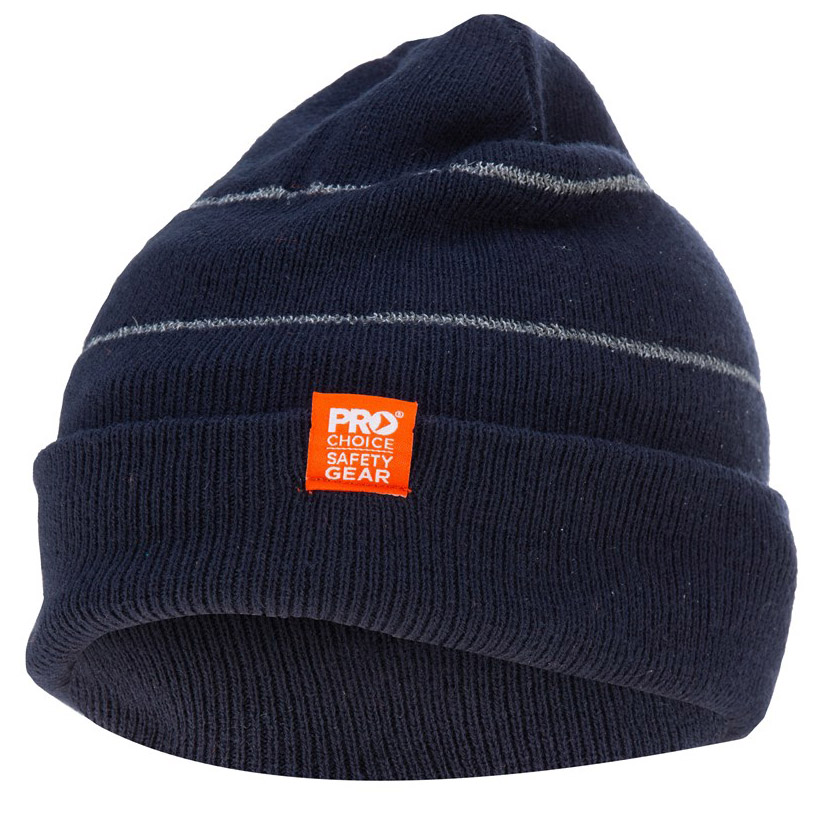Guide to hard hat accessories: What you can and can’t wear

As the weather gets cooler, you might be starting to think about beanies and other cold weather gear to keep yourself warm.
However, if you need to wear a hard hat for work, your accessories could be putting you at risk of an injury by reducing the effectiveness of your PPE.
As well as their compliance with Australian standards, safety hard hats and other PPE rely upon an adequate user fit to protect the wearer.
Any additional accessories or clothing which affect fit could reduce the hard hat’s ability to keep you safe.
This also applies to wearing other PPE with hard hats, such as safety glasses, and highlights the importance of choosing appropriate equipment for the task and user, including testing the fit of PPE together beforehand.
But while you shouldn’t ever leave off necessary PPE, when it comes to other add-ons, how do you decide if it’s safe to wear granny’s knitted beanie under your hard hat?
First and foremost, always follow the manufacturer’s instructions. If the manufacturer says don’t do it… don’t do it!
But where they haven’t specified if something is allowable, you will have to conduct your own risk assessment.
To help you out, we’ve put together a quick guide with some hard hat accessory dos and don’ts.
1. No pom-poms!
If your granny’s beanie has a pom-pom, then it’s out. The same goes for turbans, sombreros, high ponytails (not an accessory, but still worth mentioning) and anything else which gives your hard hat too much extra lift.
Unfortunately, all of these kinds of headwear make the hard hat unstable, increasing the likelihood of it sitting incorrectly on your head and failing to adequately protect you in an accident.
If the added accessory doesn’t sit smoothly against your head, then it’s not a good idea to wear it.
2. Choose winter liners and flat-top beanies.
Winter liners – a balaclava style headwear – and flat-top beanies are generally appropriate to wear under hard hats, although you should conduct a fit test yourself.
As long as they are close-fitting, without any metal pieces, and do not obstruct the fit or stability of the hard hat, then they can keep your head warm all through winter.
However, always remember to conduct a fit test before starting the job.
3. No caps… or metal!
While they sit closer to your head, most baseball caps come with a metal stud or button on the top which could prove dangerous.
In the event of an impact, the metal button could be driven into your skull, causing an injury that would not otherwise have occurred.
Additionally, if the face visor of the cap is curved, it may prevent the hard hat from being fitted correctly.
So avoiding caps (and any metal) under your hard hat is definitely the way to go.
4. Sun and sweat protection is a go.
While caps are out, cotton/polyester or plastic visors, brims and flaps which attach to the helmet are a great solution to staying sun safe throughout summer.
Make sure you read the manufacturer’s instructions to ensure that you’re using them correctly and with the right type of hard hat.
And if you want to use a soft sweat band to keep the sweat out of your eyes, that will typically fit easily with a hard hat as well.
5. Straps and lamps
Adding a strap or lamp to your hard hat could improve your safety, however make sure to fit these accessories correctly.
It’s always best to buy your hard hat and these types of accessories from the same manufacturer to ensure a better fit, rather than mixing different brands.
Buy a Pro Choice hard hat here or one of ProChoice’s new beanies to keep your head warm this winter and check out our other hard hat accessories here.








































































